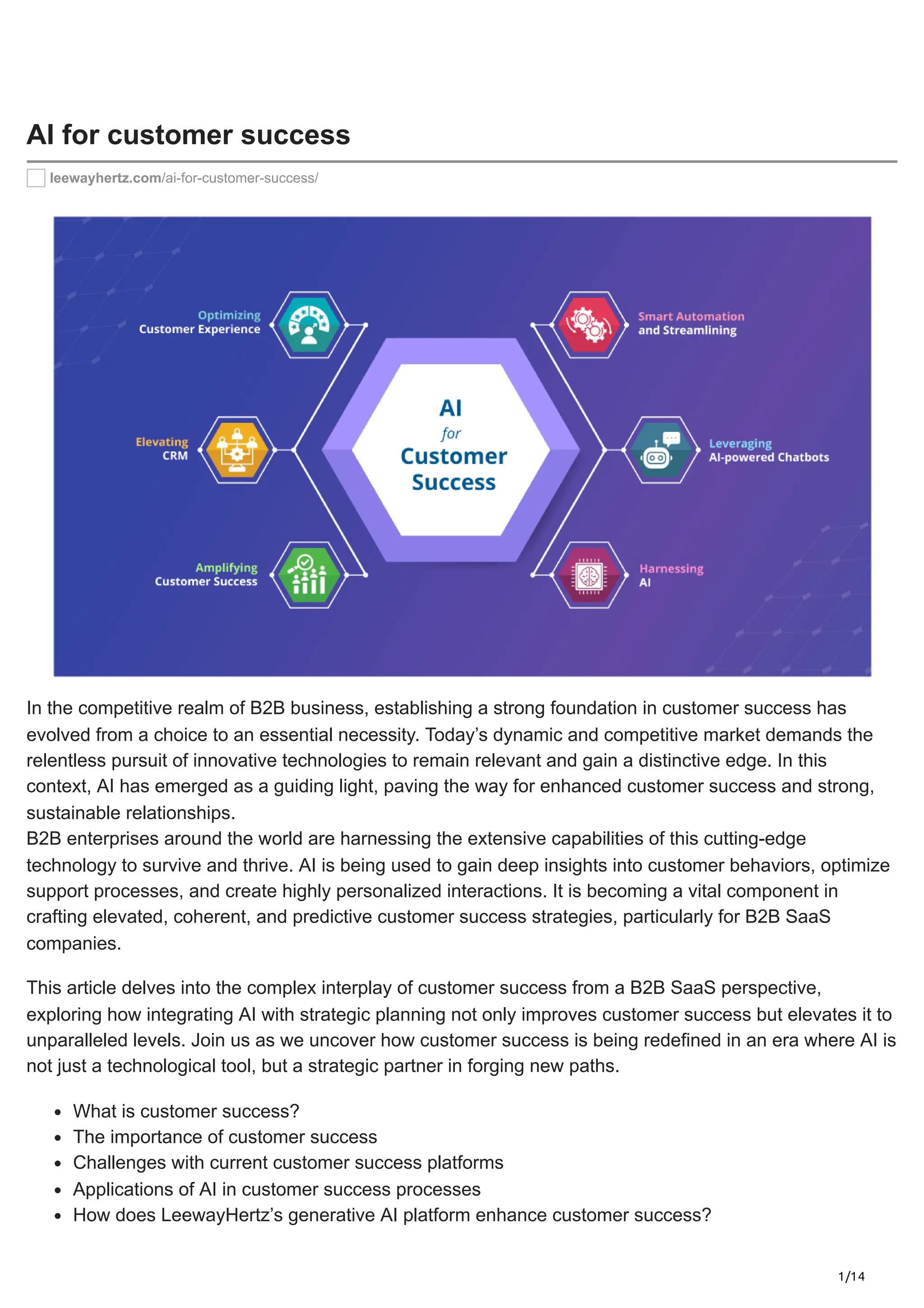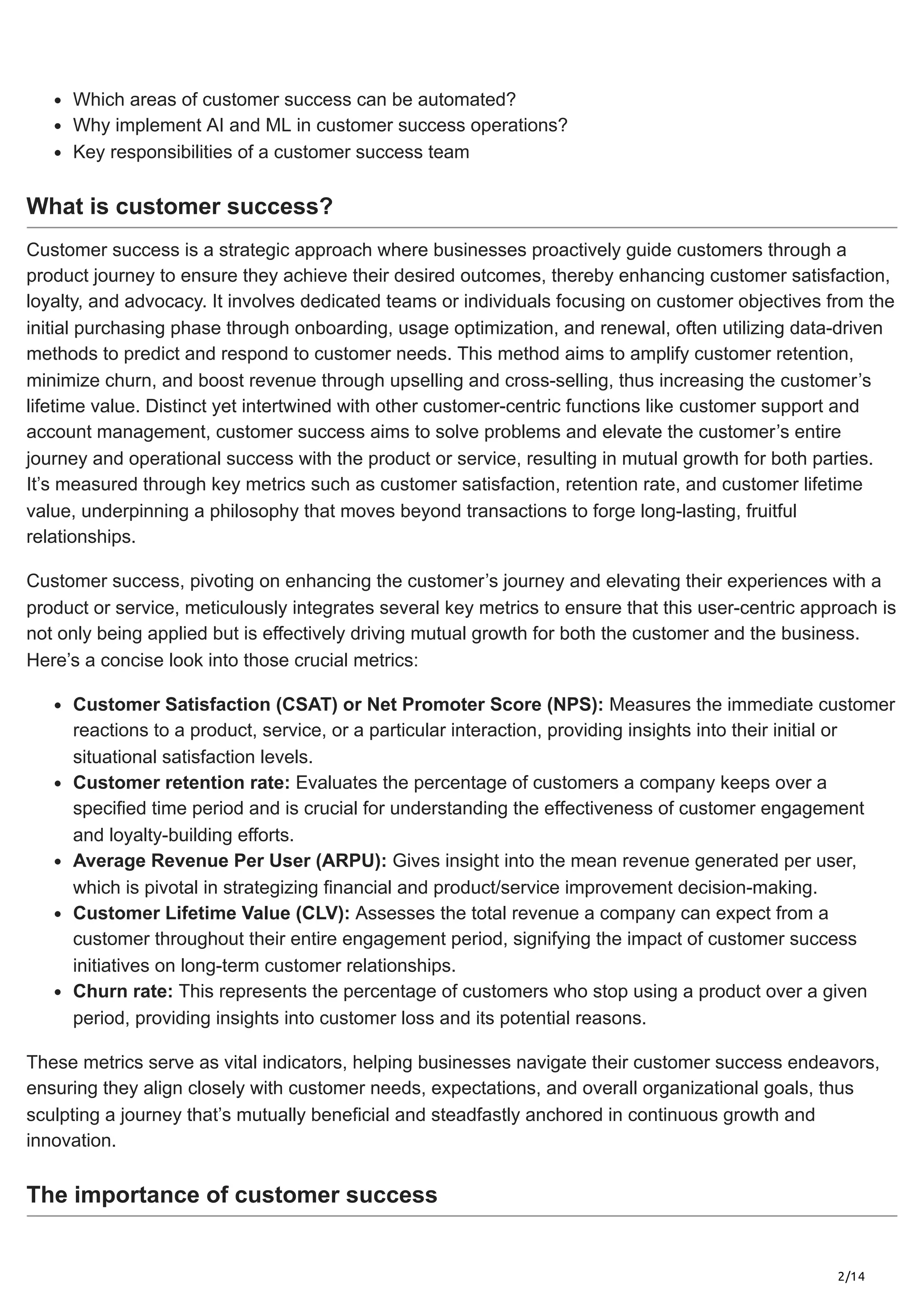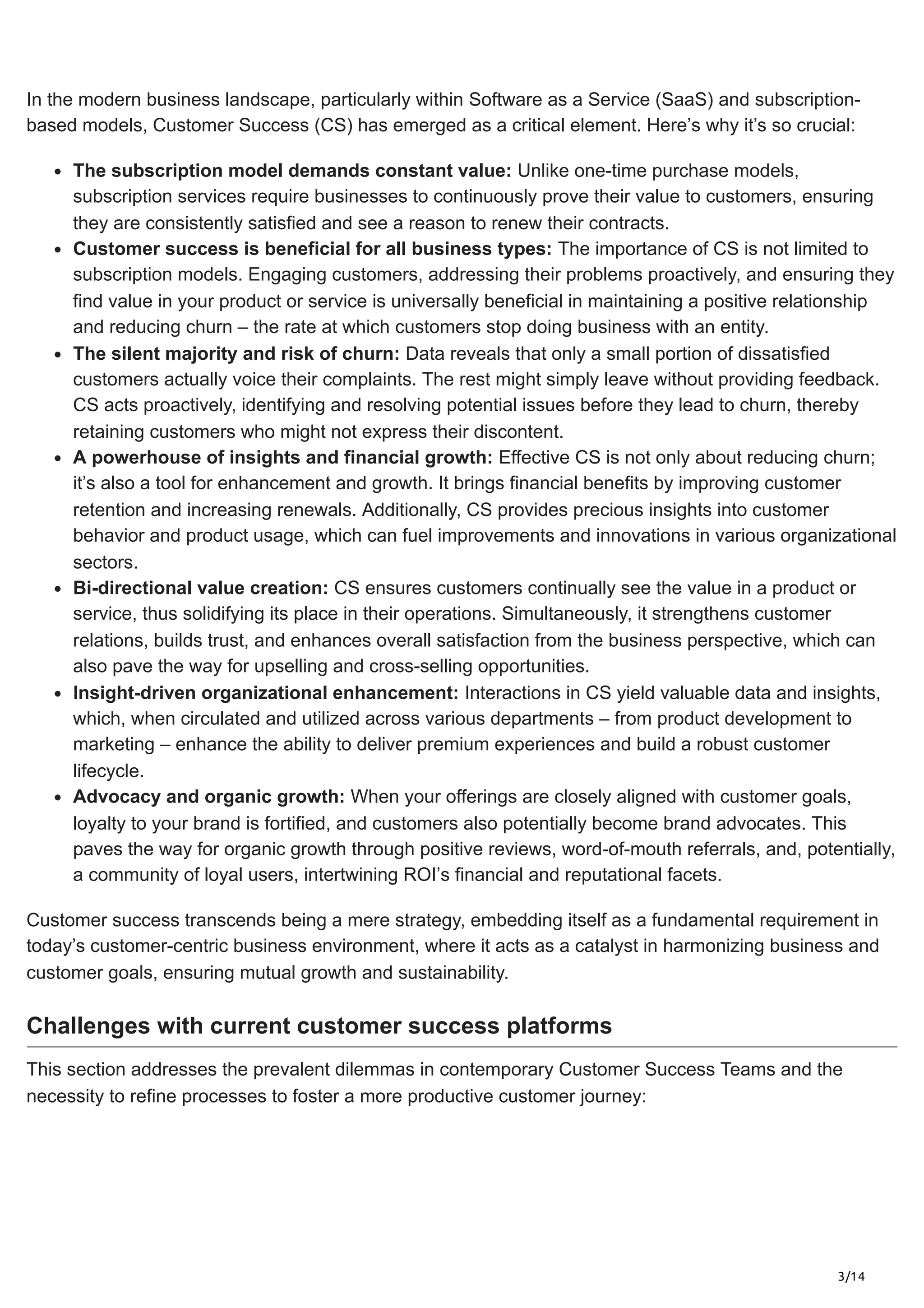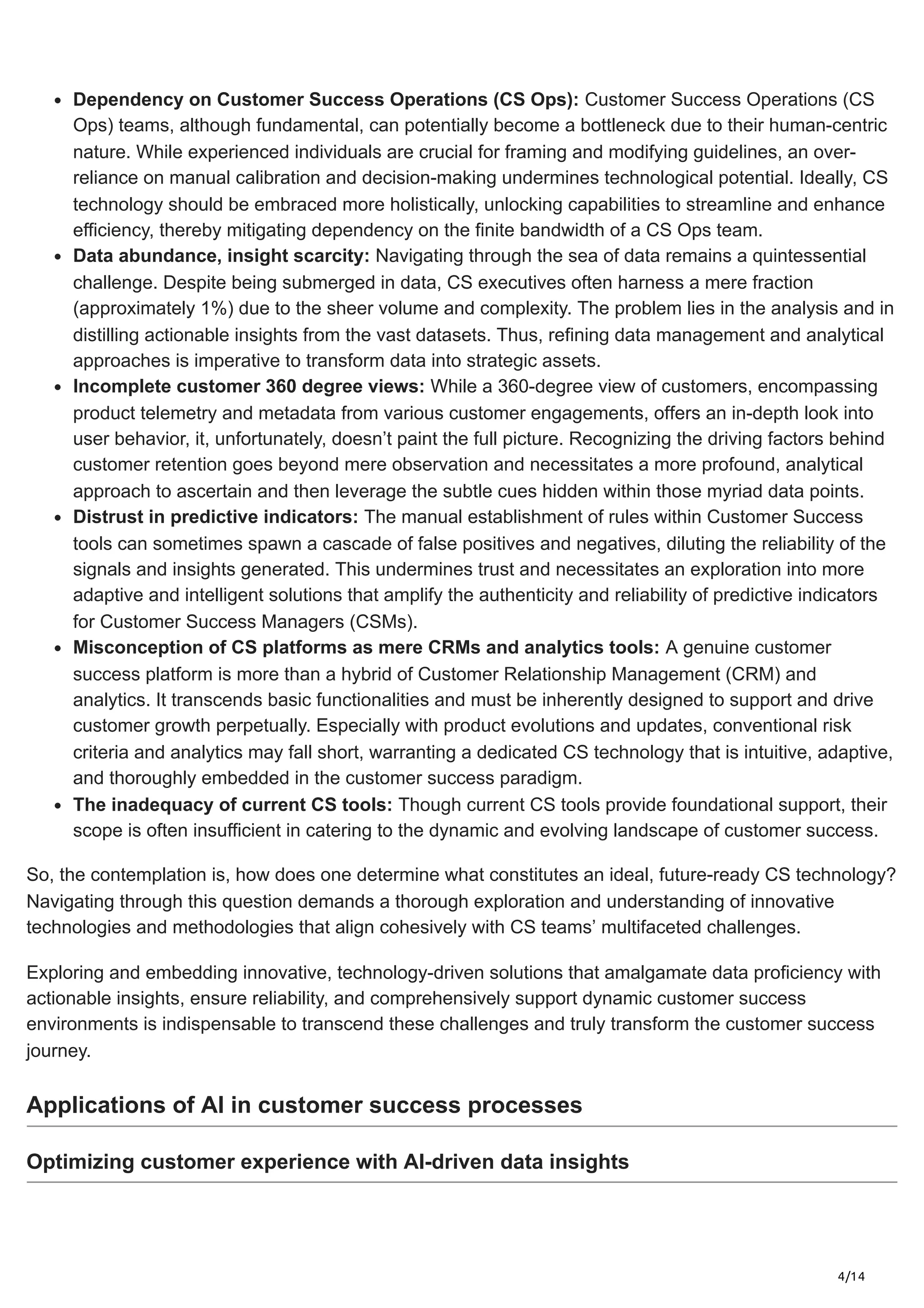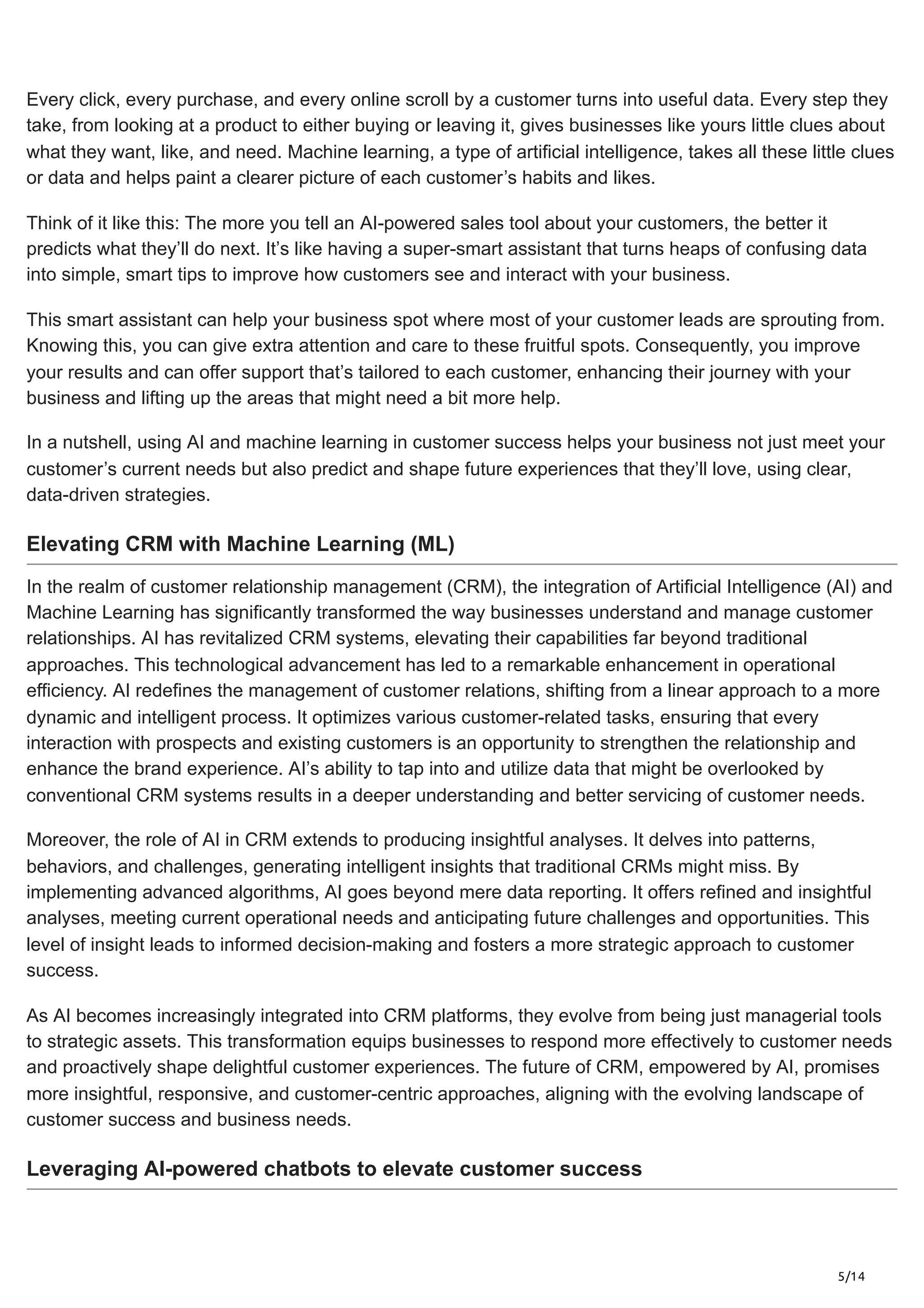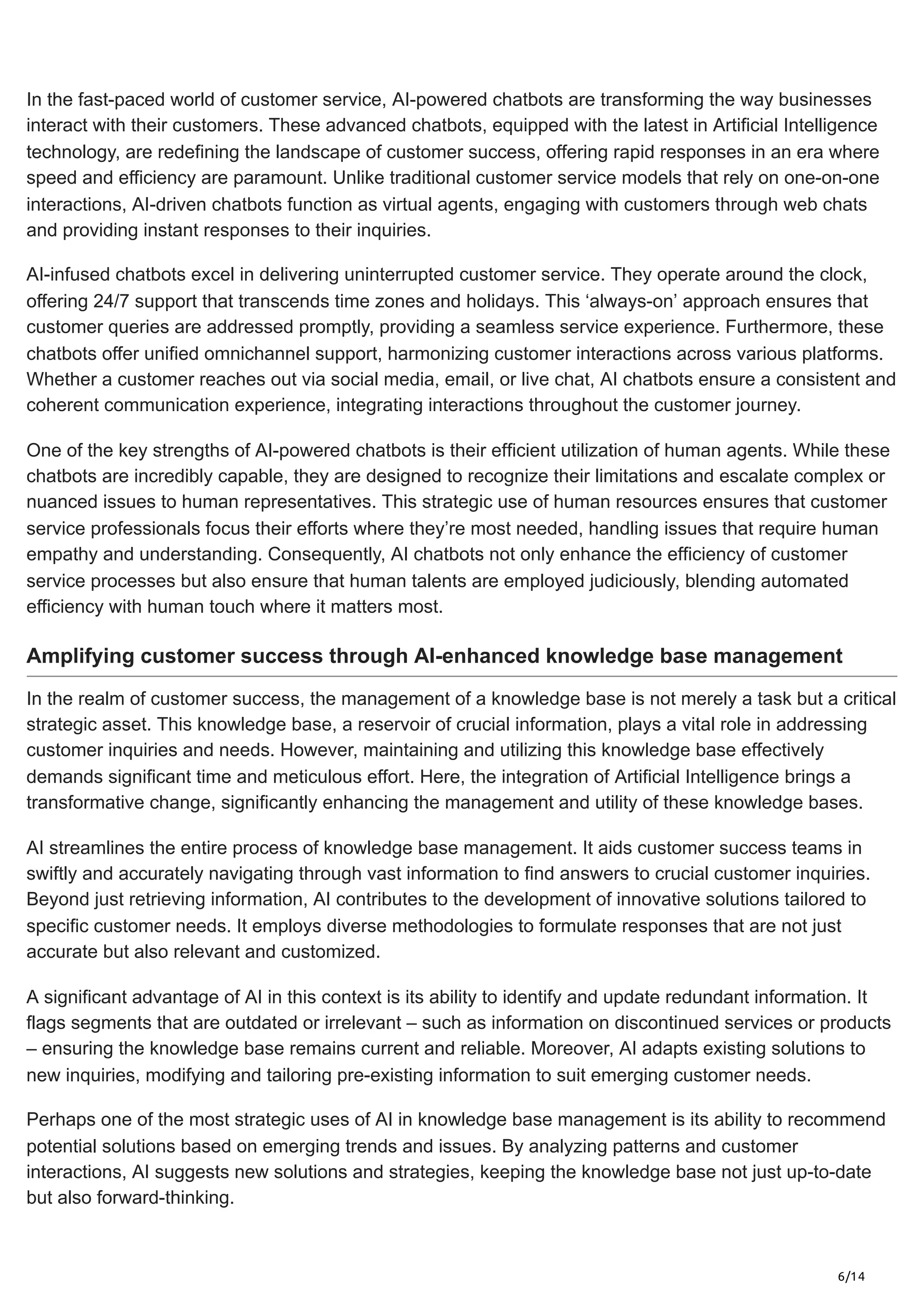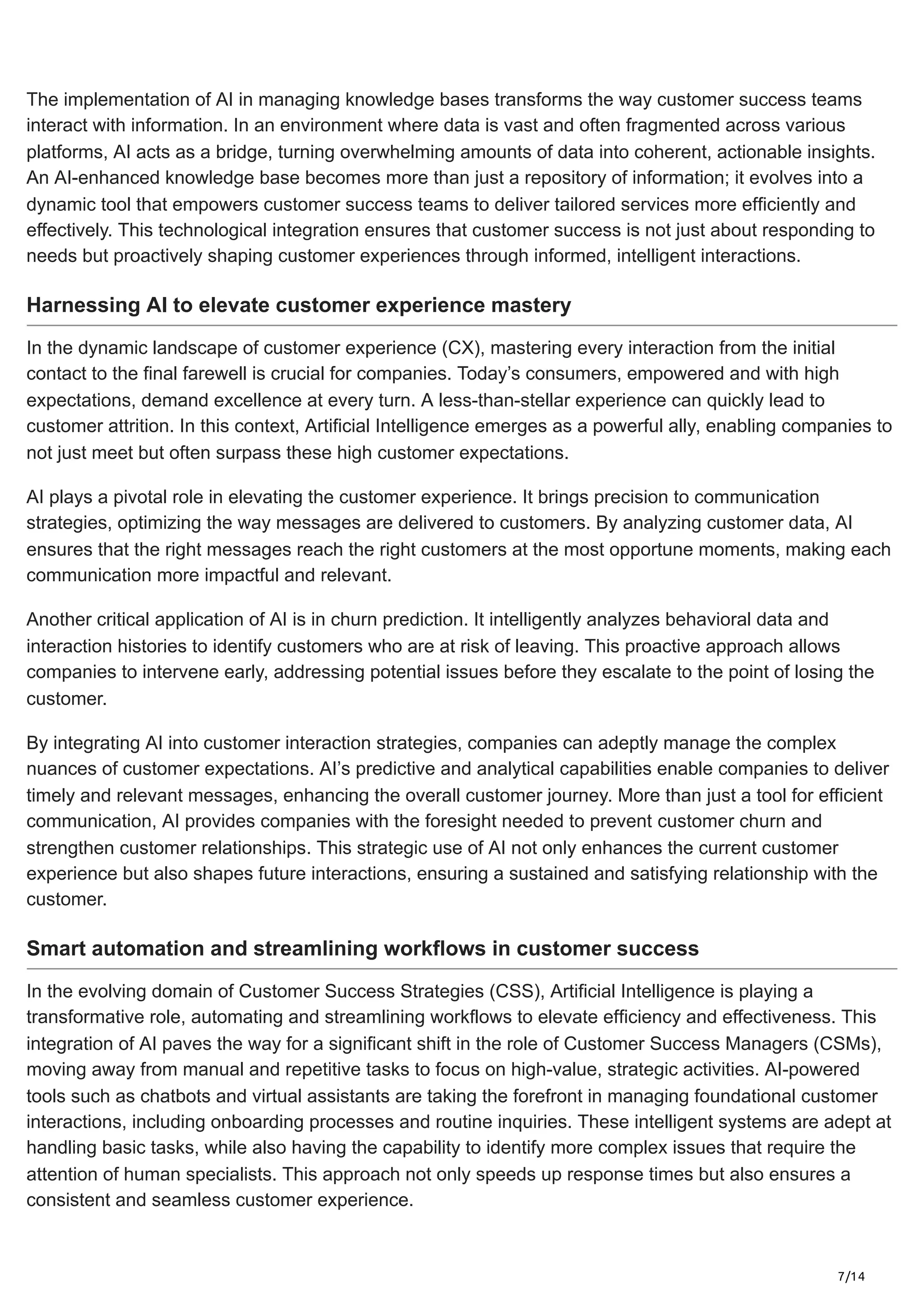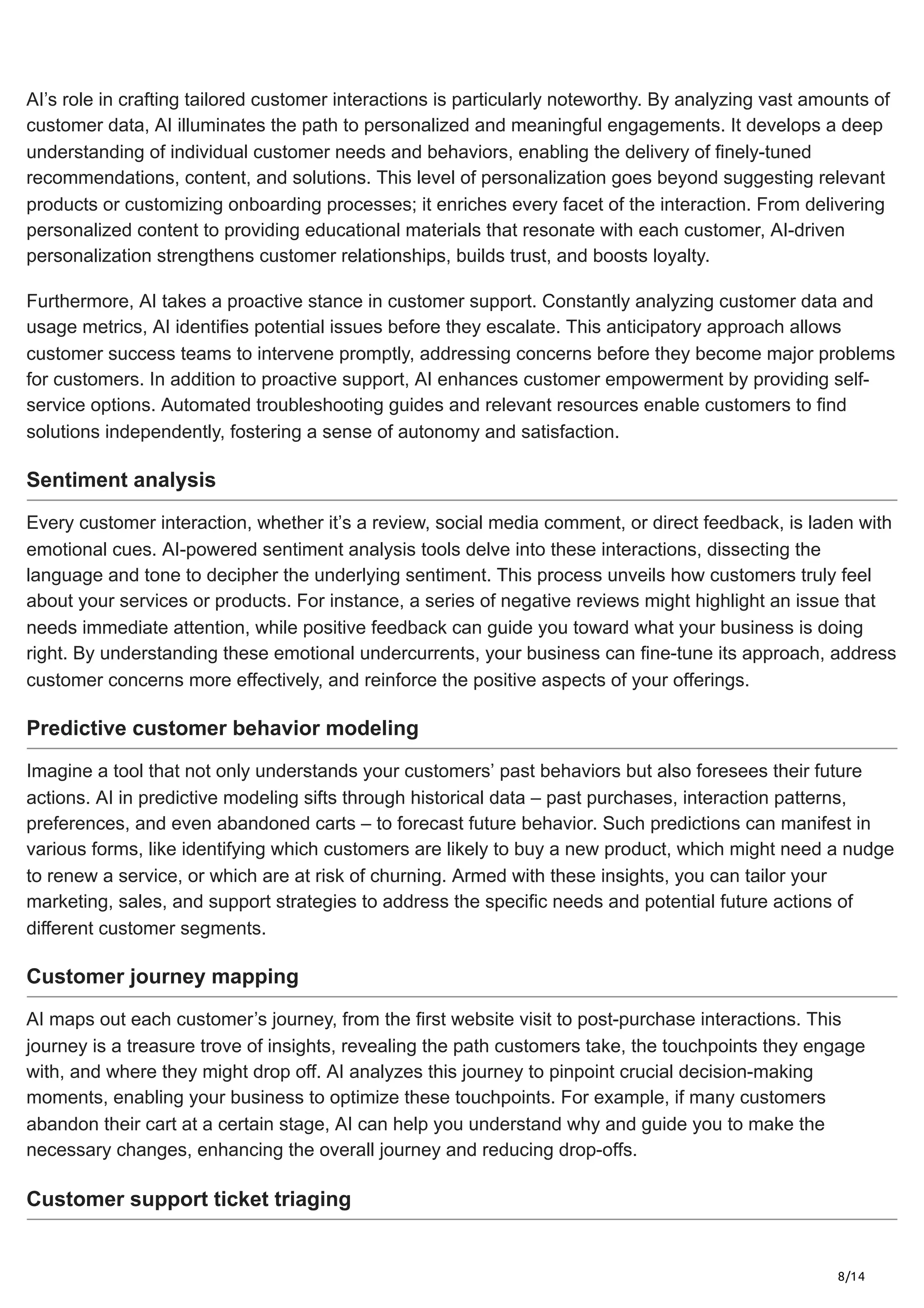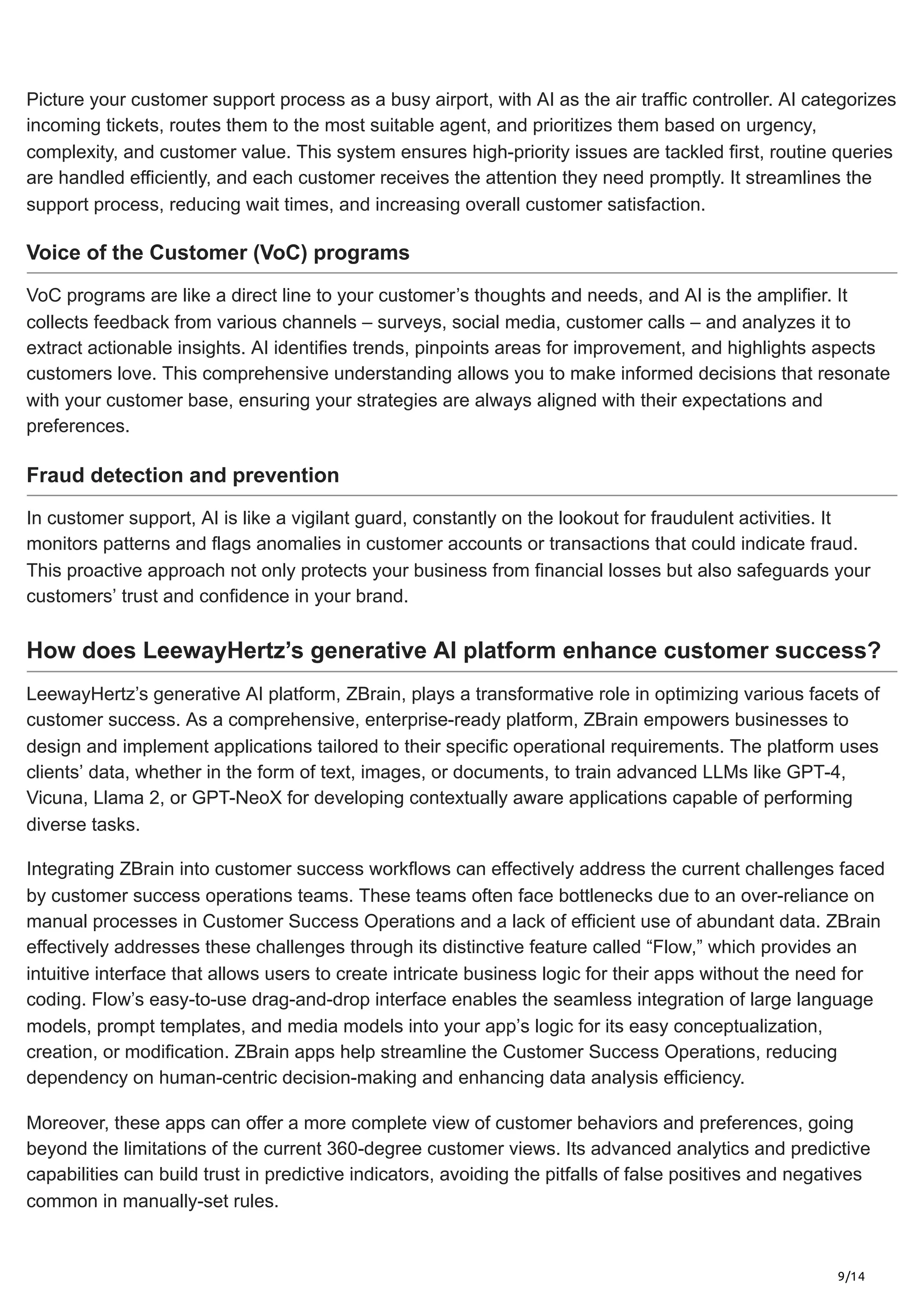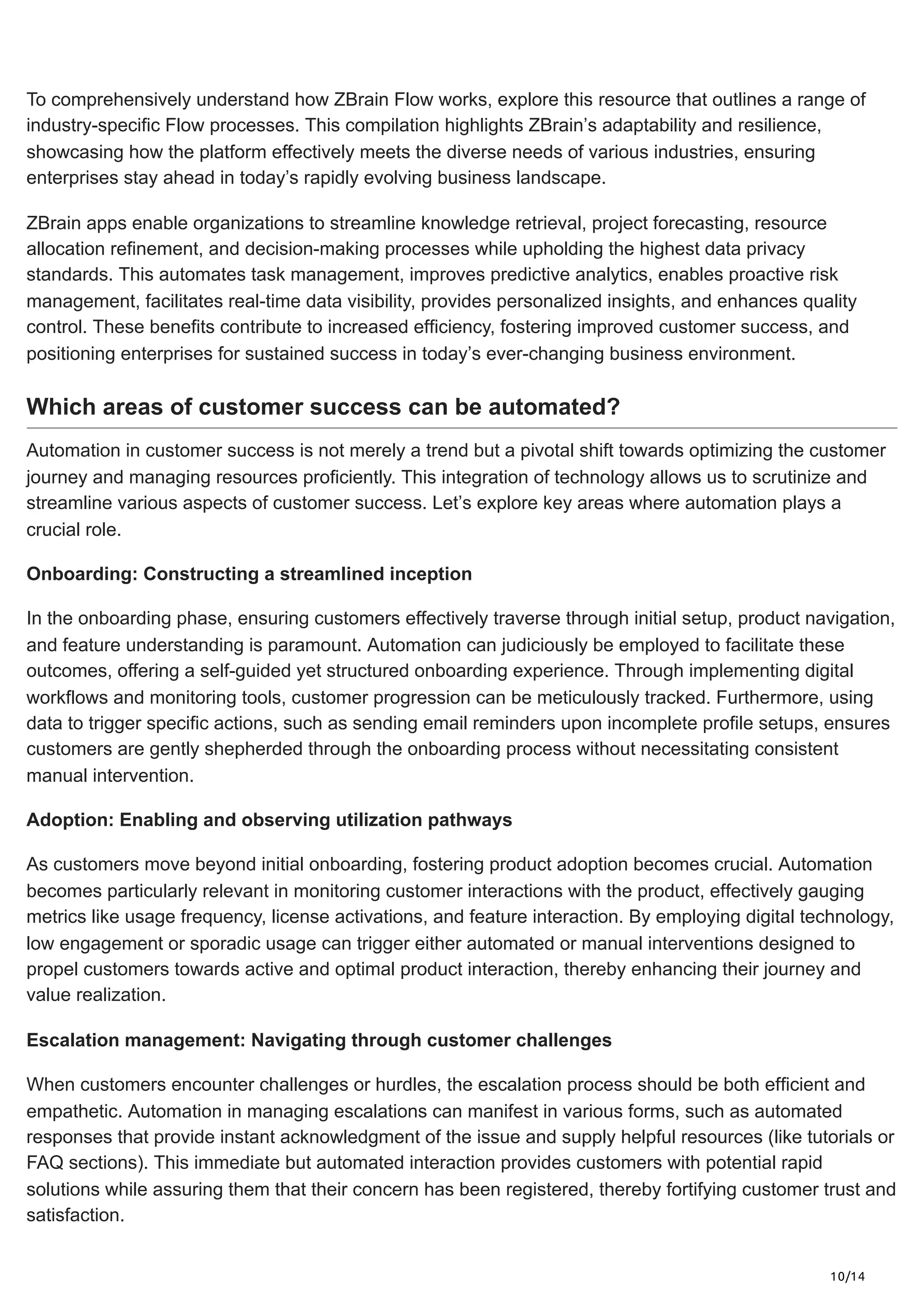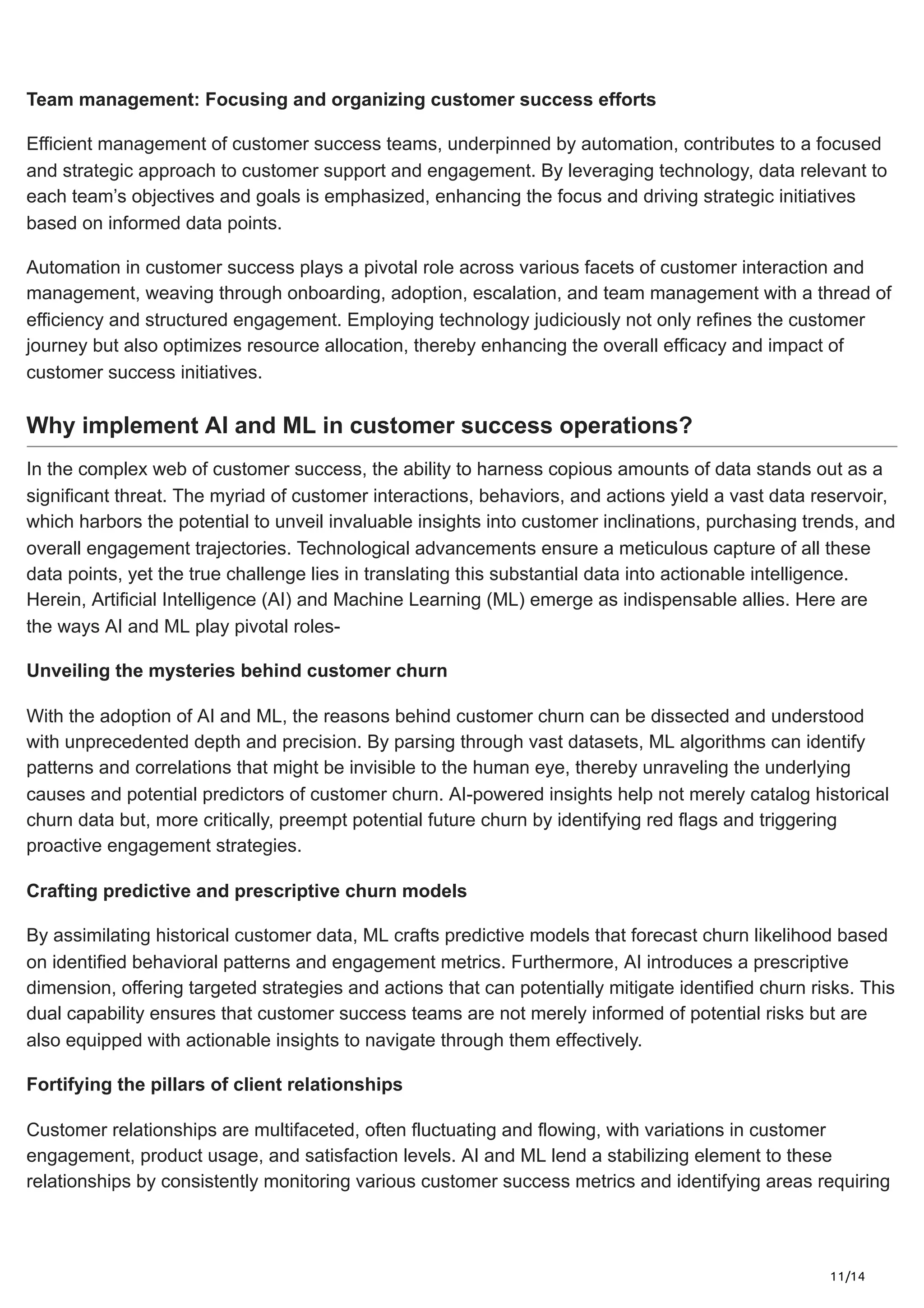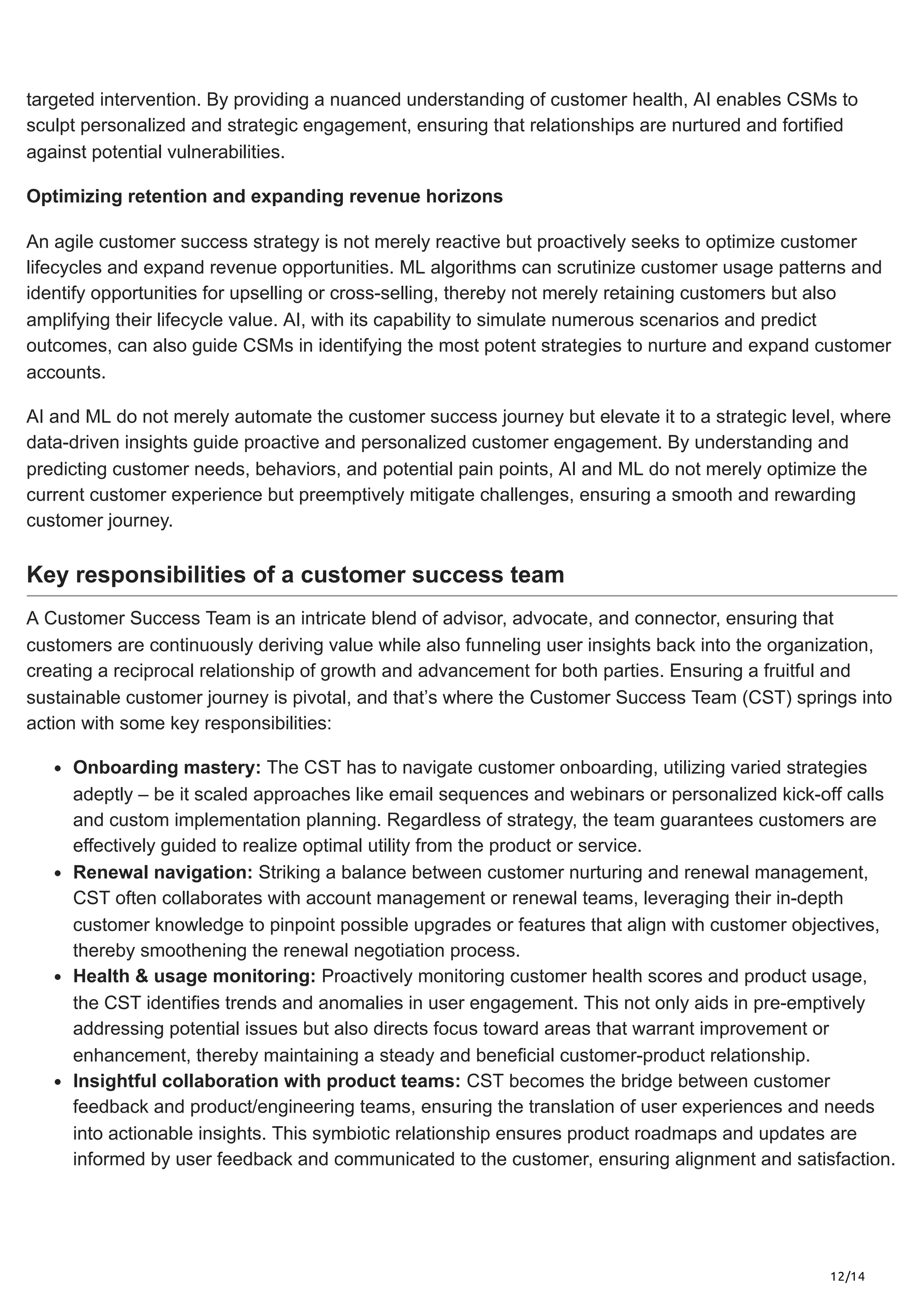In the competitive B2B landscape, customer success has become essential, particularly through the integration of AI which enhances customer relationships and optimizes support processes. AI provides deep insights into customer behaviors, predictive strategies, and improves operational efficiency, transforming traditional customer relationship management. The document discusses the challenges current customer success platforms face and emphasizes how AI applications can streamline workflows, enhance customer experiences, and foster long-term business growth.
